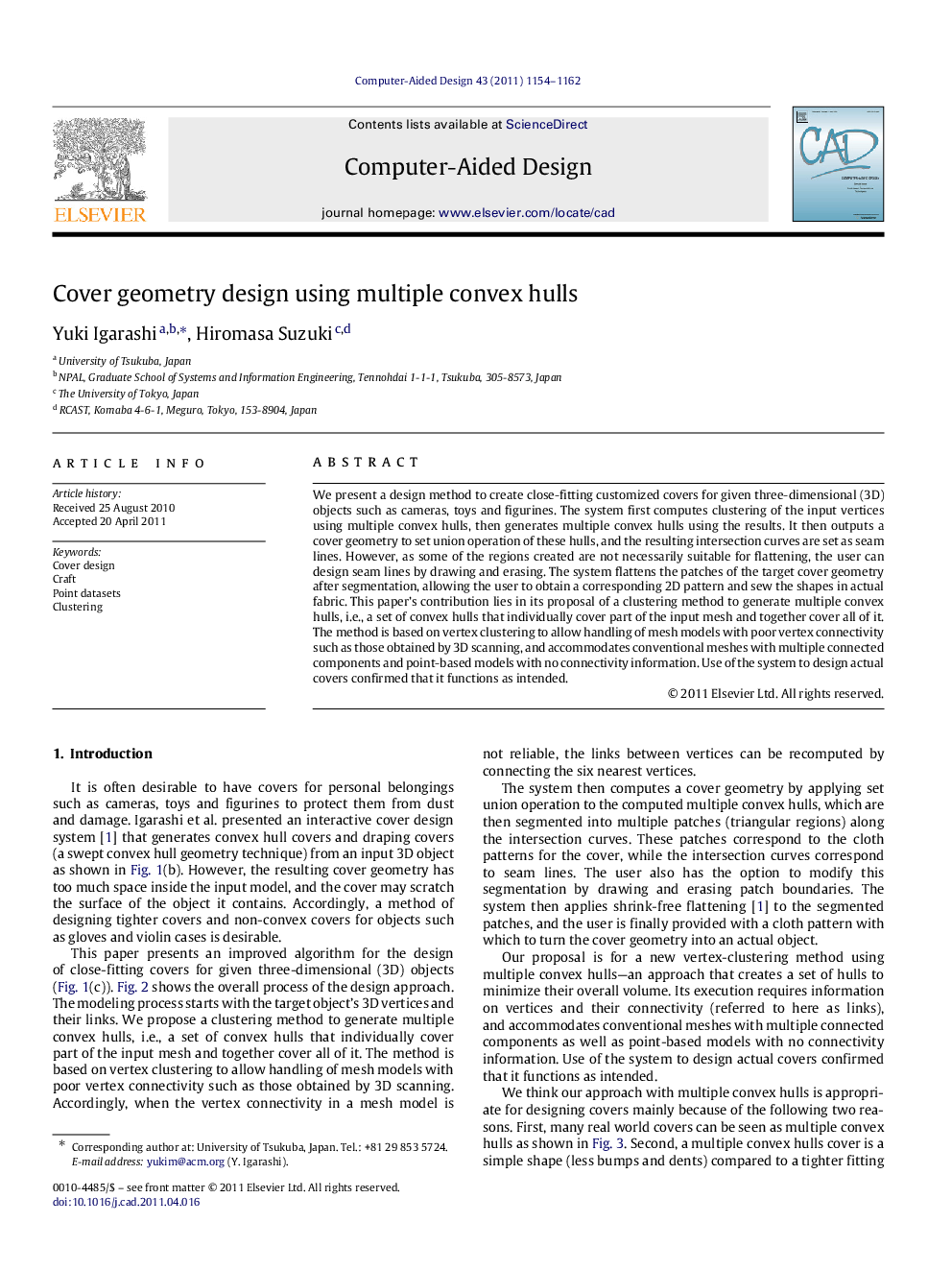| Article ID | Journal | Published Year | Pages | File Type |
|---|---|---|---|---|
| 439677 | Computer-Aided Design | 2011 | 9 Pages |
We present a design method to create close-fitting customized covers for given three-dimensional (3D) objects such as cameras, toys and figurines. The system first computes clustering of the input vertices using multiple convex hulls, then generates multiple convex hulls using the results. It then outputs a cover geometry to set union operation of these hulls, and the resulting intersection curves are set as seam lines. However, as some of the regions created are not necessarily suitable for flattening, the user can design seam lines by drawing and erasing. The system flattens the patches of the target cover geometry after segmentation, allowing the user to obtain a corresponding 2D pattern and sew the shapes in actual fabric. This paper’s contribution lies in its proposal of a clustering method to generate multiple convex hulls, i.e., a set of convex hulls that individually cover part of the input mesh and together cover all of it. The method is based on vertex clustering to allow handling of mesh models with poor vertex connectivity such as those obtained by 3D scanning, and accommodates conventional meshes with multiple connected components and point-based models with no connectivity information. Use of the system to design actual covers confirmed that it functions as intended.
Graphical abstractFigure optionsDownload full-size imageDownload as PowerPoint slideHighlights► We present a design method to create close-fitting customized covers for given three-dimensional objects. ► This paper’s contribution lies in its proposal of a clustering method to generate multiple convex hulls. ► The method is based on vertex clustering to allow handling of mesh models with poor vertex connectivity. ► Use of the system to design actual covers confirmed that it functions as intended.
